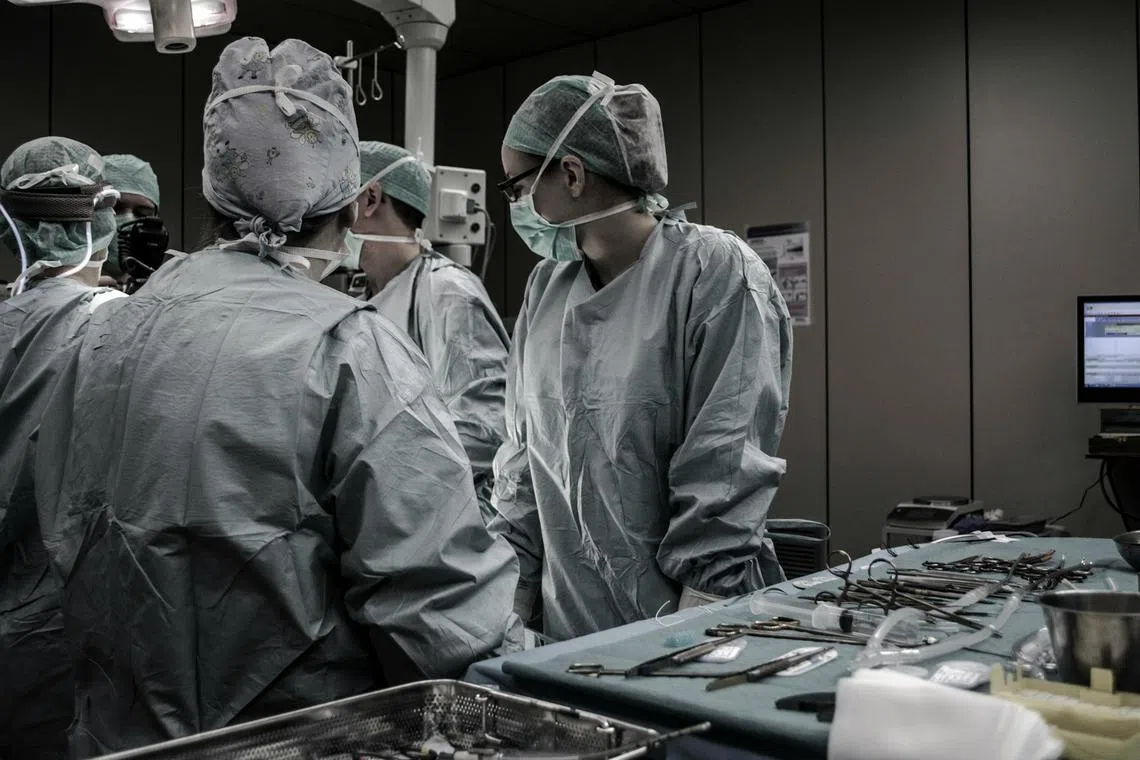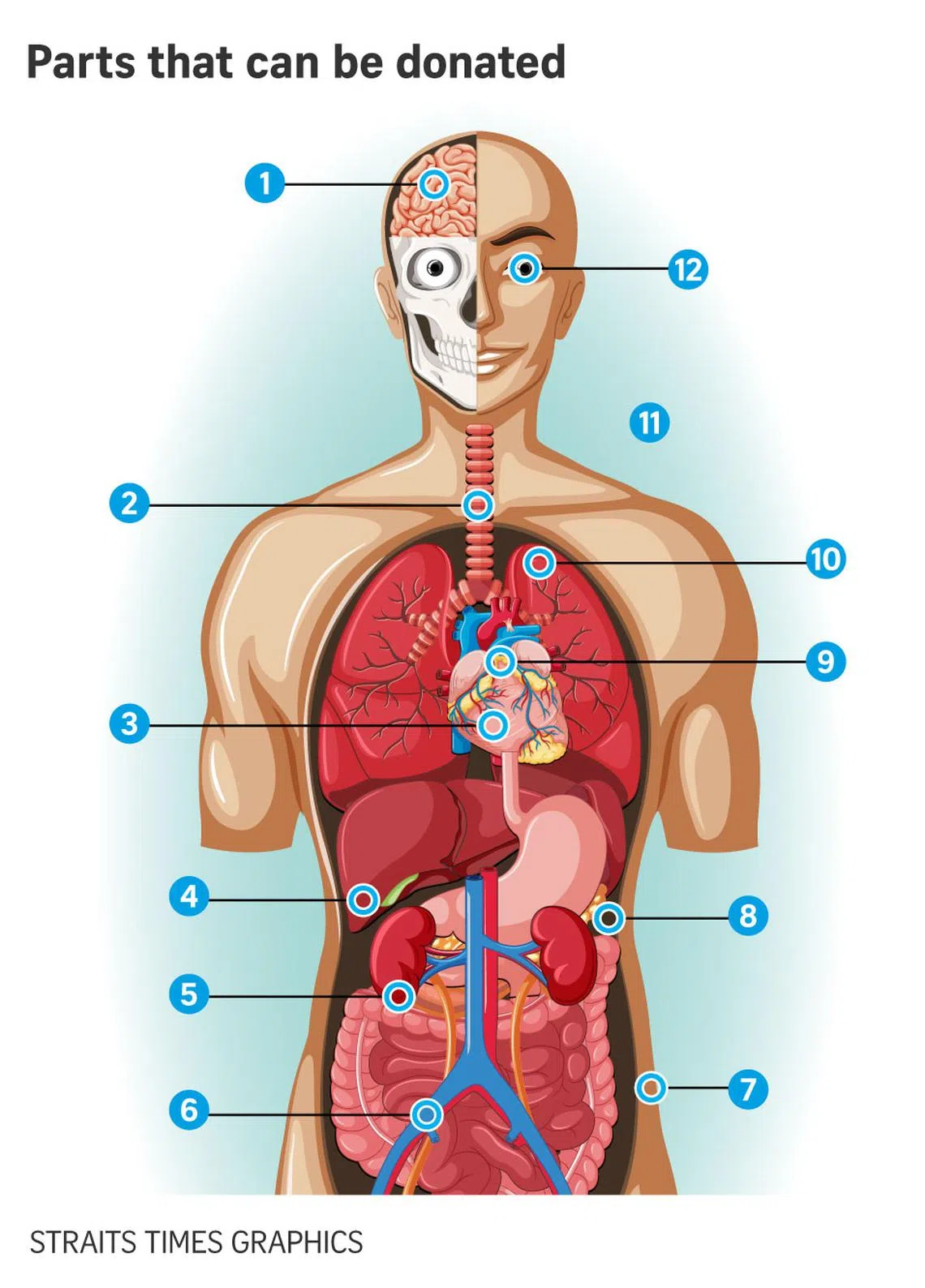Life after death: A guide to donating your organs in Singapore once you die
Sign up now: Get ST's newsletters delivered to your inbox

Up to seven lives can be saved by a donor.
PHOTO ILLUSTRATION: UNSPLASH
Follow topic:
SINGAPORE – Every year, more than 400 patients in Singapore wait for a life-saving transplant. Most patients have to wait five to 17 years
On a positive note, deceased organ transplant rates have inched upwards over the last decade, according to the latest figures from the Ministry of Health.
The rate of dead donors in Singapore who donated kidneys rose from 6.3 people per million population (pmp) in 2013 to 6.59 in 2023. Over the same period, rates for liver donations from dead donors grew from 3.52 pmp to 3.89, while heart donations from deceased donors increased from 0.74 pmp to 0.85.
However, these figures lag behind those in countries like Spain, the global leader in deceased organ donation, which logged a rate of 48.9 donors pmp in 2023.
The Straits Times looks at how your body can help others after you die.
Parts that can be donated
1. Brain
Can be donated for research, ideally within 24 hours of death, to help doctors’ understanding of neurological disorders and treatment.
2. Trachea
Offers relief to patients whose windpipes are hardened and narrowed due to scarring or inflammation, making breathing difficult.
3. Heart
Gives heart patients with an irreparably diseased or damaged heart, or congenital heart defects, a better shot at survival and an improved quality of life.
4. Liver
Offers a lifeline to those with severe liver conditions like cirrhosis or cancer who would otherwise die in a year or two due to toxin build-up in the body.
5. Kidney
Frees individuals with kidney failure from needing dialysis several times a week.
6. Iliac vessels
These blood vessels from the pelvis are used as grafts to connect a transplanted organ to the recipient’s own blood vessels.
7. Skin
Grafting healthy skin aids healing from severe burns, restoring skin appearance and function.
8. Pancreas
Diabetics no longer need insulin jabs when they get a functioning pancreas that produces insulin, the hormone that regulates blood sugar levels.
9. Heart valves
Correct narrowed or leaky valves to ensure normal, one-directional blood flow for proper blood circulation.
10. Lung
Breathes new life into patients with conditions like chronic obstructive pulmonary disease that results in frequent hospital admissions.
11. Whole body
Allows medical students and researchers to study the human body and trial new life-saving procedures.
12. Cornea
Restores vision to the blind or those with various corneal conditions affecting vision like scarring, dystrophy or ulcers.

Deceased donation process
Death
A person’s organs, tissue or whole body will be recovered for donation only after the person is certified brain-dead (all brain function, including the brain stem’s, has irreversibly ceased), or after circulatory death (the heart has irreversibly stopped beating).
A transplant coordinator checks if the person is listed as a donor and, if so, briefs the family about the process that would follow.
Assessments are done to determine if the body or parts are suitable for donation.
Transplantation
Organs can remain viable for transplantation after brain death if the patient is supported on a ventilator, but deteriorate quickly after circulatory death. However, tissues such as skin, heart valves and corneas remain viable for about 24 hours, even after circulatory death.
Organ and/or tissue donation will take place only if the potential donor is medically suitable and there is a matching recipient.
Any cuts made when retrieving the organs will be repaired, so donors can have an open casket wake and funeral, if possible.
Whole body donation
This occurs after circulatory death.
The body is usually embalmed, and the family can hold a wake for up to three days.
A medical institution uses the donated body for education and research, for up to three years.
The institution then informs the family and arranges for a cremation. The family can collect the ashes or opt for a sea burial arranged by the institution.
How to become a donor
Unless they have opted out, all Singaporeans and permanent residents aged 21 and above, who do not have mental disorders, are legally required to donate their kidneys, heart, liver and corneas for transplantation after they die from any cause.
Anyone aged 18 and above can pledge his organs and tissues for transplantation, education or research.
An adult next of kin can also pledge the organs and tissues of a dead patient of any age for donation.
Those who wish to donate their brains to science can register with the Brain Bank Singapore.
Donors should tell their loved ones about their choices so they will be more ready to honour their decisions.
By the numbers
The deceased donation process can take 24 to 36 hours.
There is no upper age limit for organ donation. The oldest dead donor in Singapore was 83.
Up to seven lives can be saved by a donor.
Sources: SingHealth, Ministry of Health, Singapore Hospice Council


